VOL- 8 ; ISSUE- 2, PUNE RESEARCH - An International Journal in English (ISSN 2454-3454) JIF 3.02
8.2 ENGLISH
Area of Article : ALL
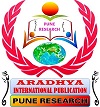
VOL- 8 ; ISSUE- 2, PUNE RESEARCH - An International Journal in English (ISSN 2454-3454) JIF 3.02
8.2 ENGLISH

VOL- 8 ; ISSUE- 2, PUNE RESEARCH - An International Journal in English (ISSN 2454-3454) JIF 3.02
8.2.1 ENGLISH
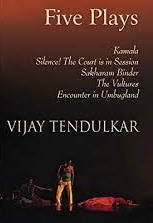
Women
are usually exploited and suppressed in the normal pecking order of patriarchal
society. They are treated as a commodity or object in certain communities. They
are suppressed, subdued and restrained in the shackles of matrimony. They are
exploited physically, psychologically, economically and sexually too. A woman
has to go by way of the will of her husband in her whole life. Even wedding
band seems too weighty to wear not of its mass but because of her matrimonial
constraints. But she wishes to liberate herself and be bold and dominant like
the other sex. However there are some cases when woman does not accept meekly
all the suppressions and protest against the male-dominated society to achieve
her identity and place. Sometimes she stands
parallel to masculine gender or even outmaneuvers him by her wits and actions.
It is seen that woman is involved in the two opposite phases of contentment and
resistance, of capitulation and rebellion. Literature does show the different
phases of woman’s position in the society in the different ages. John Osborne
English playwright and Vijay Tendulkar, Marathi playwright have shown the woman
undergoing through both the processes in his plays. If Laxmi is submissive then
Champa is aggressive. Tendulkar’s Jyoti and Osborne’s Jean are described as
daring resolute whereas Vijaya has been presented as alpha female who leads the
male world. Alison and Sarita are made up of the same material. The paper is
being designed to discuss the female characters in the famous plays of Osborne
and Tendulkar by analyzing their struggle for their survival.
VOL- 8 ; ISSUE- 2, PUNE RESEARCH - An International Journal in English (ISSN 2454-3454) JIF 3.02
8.2.2 ENGLISH
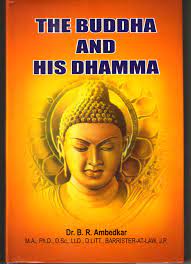
After
a long study of 35 years of various religions, Dr.Ambedkar concluded that only
the Buddhism suited to his ideology. He had declared to denounce Hinduism at
people in 1935 and embraced Buddhism in 1956. The period between these two
years means a lot. He wanted a new
religion, but not for spiritual salvation. His noble work BHD asserts the
religion as Dr.Ambedkar thought. ‘Buddha
and His Dhamma’ is the culmination of Dr. Ambedkar’s writing .Buddhist world
has accepted as ‘The Bible’. But more or less it is treated as religious
document and read in the same direction.
It is the historical fact that Buddhism is not only a new philosophy but
also it a reaction degraded Hinduism. Lifelong humiliations, painful
experiences, and agonizing memories compelled him to think about Buddhism as
new solace. The Buddha and His Dhamma ,a treatise on Buddha’s life and Buddhism
, was the last work of Indian statesman and Scholar Dr.B.R.Ambedkar .The book
is treated as a holy text by Indian
Buddhists and specially a way of living and thinking for
Ambedkarites. For many of the literate it is the sole Buddhist text they own or
have read .For the illiterates it is one they hear ,read aloud to them in village and city slums , bearing in their eyes the authority
of sacred scriptures . It may not be the exaggeration to say that the present
new generation among literate
Ambedkarite families grow reading The Buddha and His Dhamma.
VOL- 8 ; ISSUE- 2, PUNE RESEARCH - An International Journal in English (ISSN 2454-3454) JIF 3.02
8.2.3 ENGLISH
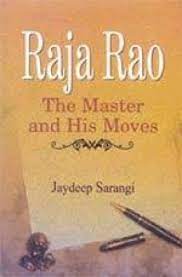
Raja Rao, in his novels and Stories, he is
said to have given graphic description of Indian life. He moves the readers
with his excellent descriptions of the sufferings of the Indian untouchables
and Hindu widows and draws vivid pictures of the exploitation of the peasants
and labourers by the landlords, the plantation owners and many lenders. Rao is
no doubt, a great novelist of Indo-Anglian literature, who brings before the
readers a profound picture of India with the help of symbols like Kashi, cow,
the Ganga, Rakhi, coconut, kum-kum, toe rings etc. He is an adept in bringing
out the real emotions and feelings while writing in a foreign language. His
imagery is out and out Indian. His similes and metaphors are all taken from the
lives of the people who are described, and his images and symbols are drawn
from common Indian objects and experiences. According to him, rice should be
fine as filigree and mangoes should be yellow as gold.
Key Words: -
prejudices and superstitious, incarnation of Indian sensibility, etc.
VOL- 8 ; ISSUE- 2, PUNE RESEARCH - An International Journal in English (ISSN 2454-3454) JIF 3.02
8.2.4 ENGLISH
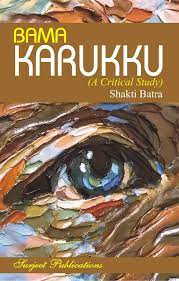
Bama
is the pen name of Faustina Mary Fatima Rani. It is intended to introduce Dalit
writing from Tamil Nadu and also to have a cursory glance on Dalit writing
across India. It will take us on the thought deeply rooted in about the
character of Dalit life and writing, about the connection between activism and
literature. The complicate issues from different perspectives due to the feature of Bama's work as a
Christian Dalit also as a woman writer, both of which provides a tangentially
different understanding of Dalit experiences. In this paper we will know about
everything of Bama's work Karukku, as a study of work as an embodiment of
entire society.
Keywords -
Self, Elements, Autobiography, Identity, Caste Crisis etc
VOL- 8 ; ISSUE- 2, PUNE RESEARCH - An International Journal in English (ISSN 2454-3454) JIF 3.02
8.2.5 ENGLISH
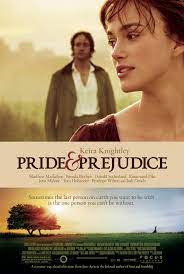
The
prime objectives of the research paper is to analyze novel Pride and Prejudice
based on its social elements based on the sociological approach, by identifying
the relation between the novel and the social background of the early
nineteenth century in English society based on sociological approach. This
research paper belongs to a qualitative research. The sources of the data are
both primary data source, which is Pride and Prejudice novel and secondary data
sources, the other sources related to the analysis such as books of literary,
journal articles, Ph. D. theses, etc., as well as the virtual references. Based on the social analysis of the novel, it
can be advocated that in Pride and Prejudice, Jane Austen conveys a social and
moral message that some people use marriage to lift up their social economic
status. Besides, she reflects the social realities of the English society
including social, cultural and religious aspect at late eighteenth century and
early nineteenth century. MLA eighth edition has been used for documentation
and citations.
Keywords: social, cultural, religious, income,
profession, marriage, aristocrat, social stratification, etc.
VOL- 8 ; ISSUE- 2, PUNE RESEARCH - An International Journal in English (ISSN 2454-3454) JIF 3.02
8.2.6 ENGLISH
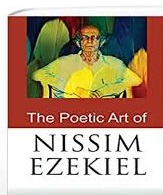
After
independence, a new period in Indo-English literature began. This period is
characterised by what is known as contemporary Indian poetry in English or
Modern Indo-Anglican poetry. Nissim Ezekiel is one of the renowned
Indo-Anglican poets who stands
next to Sir Aurobindo in the post-independence era and has a notable place in
Indian English writings. He is a well-known poet, playwright, actor, editor,
critic, journalist, and teacher all rolled into one. He was awarded a Sahitya
Academy Award in 1983 and Padma Shri Award five years later in 1988 for his
spectacular contribution in the field of Indian English poetry. Despite being
from a Jewish background, Nissim Ezekiel is an Indian poet who writes in
English. He has committed himself to Indian values, culture, people and
language and Indianness has always been in his blood and writings. The usage of
Indian idioms is a significant component of Indianness in Indian poetry.
Indianness is a challenging task to define due to the diversity of Indian
culture and languages. The Indian contemporary scene, modern urban life, Indian sensibility,
human relationship, love and sex and search for identity are the major themes
of his poetry. According to Adil Jussawalla, “Nissim Ezekiel is the first
Indian poet consistently to show Indian readers that craftsmanship is an as important
to a poem as its subject matter.” Nissim Ezekiel has experimented endlessly
with form and content of his poetry. He has expertise in flawless craftsmanship
which makes his poetry unique. The present paper concentrates on the selected
poems of Nissim Ezekiel such as Background, Casually, Very Indian Poem in
Indian English, Goodbye Party For Miss Pushpa T. S. and Night of the Scorpion
to explore an aroma of Indianness and ordinary events in his poems.
Key Words: Indianness, Indian sensibility, ordinary, culture,
human relationship.
VOL- 8 ; ISSUE- 2, PUNE RESEARCH - An International Journal in English (ISSN 2454-3454) JIF 3.02
8.2.7 ENGLISH

Western
media distorts and misrepresents the “other” cultures and creates stereotypes much
like the colonial rulers who tried to paint the natives as “savages.”Postcolonial
writers and filmmakers adapted colonial and Victorian texts to write back.
Although sometimes postcolonial filmmakers extend their resistance beyond adaptations,
but the paper intervenes with the examples of two select cultural texts viz.Gunga
Din (1939) and I Dream of Jeannie (1960), to examine how Gramsci’s concept of
cultural hegemony can be applied to illustrate the distortion of facts by the
western filmmakers.
Keywords: hegemony, distortion, culture, misrepresent, Arabs,
and colonial.